Lesson 1 - The Historical Context of Solar Energy Valued in Society
1.0 Overview
Overview
Welcome to Lesson 1! Here we start talking about solar energy and the value that societies derive from solar energy options, both past and present. Many of us who are extremely interested in solar energy have yet to learn about the deep, deep roots that the solar field has established over and over again in societies across the world. Additionally, we hear about amazing new developments in solar in the media, events that seem to be happening weekly (and sometimes daily)! We would like to generate a sense for why solar energy applications are growing now, why they did grow and sometimes bust in the past, and what we might expect in the future.
We will use examples from reading, images, and your own experience to explore the differences between:
- Solar Resource (light from the sun),
- Solar Energy Conversion Systems as designed technologies, and
- Solar Goods and Services delivered by the combination of 1 and 2 (for example, electricity as 'solar good' and shade as 'solar service').
This lesson will also explore some historical aspects of the solar field, where societies have found fuels (geofuels such as coal, petroleum products, natural gas, and the biofuels such as wood and manure) more challenging to access due to various constraints. We will see that, in fact, an inability to access fuels is often the driving force for solar development. In contrast, when access to fuels is unconstrained, we find that solar development tends to slow or cease in society. In this lesson, we will also see how emerging solar industries correlate with global shifts in perspective regarding anthropogenic global warming, sustainability, and energy security. Frameworks will be explored for policy and entrepreneurial responses to these new perspectives.
1.1 Learning Outcomes
Learning Objectives
By the end of this lesson, you should be able to:
- Discriminate between (1) Solar Resource, (2) Solar Energy Conversion Systems, and (3) Solar Goods and Services;
- Explain the goal of solar design in terms of locale, stakeholders/clients, and solar utility;
- Connect the historical and modern contexts for solar energy growth/recession to stakeholder preference, fuel constraints, and solar rights/access.
What is due for Lesson 1?
This lesson will take us one week to complete. Please refer to the Canvas Calendar for specific timeframes and due dates - those can vary from semester to semester. Specific directions for the assignments below can be found further within this lesson.
| Required Reading: |
J.R. Brownson, Solar Energy Conversion Systems (SECS), Chapter 2 - "Context and Philosophy of Design" J. Perlin, "Let It Shine: The 6000-Year Story of Solar Energy", Chapters 2, 3, and 6. (These books can be accessed online via Library Resources tab in Canvas or by search of Penn State's Library. You must be a Penn State student to access this text via the E-Reserves). |
|---|---|
| To Do: |
Learning Activity: Identifying the Components of SECSs Yellowdig Discussion: Historical Development of Energy Resources Download NREL's System Advisor Model (SAM) Engage in all Try-This and Self-check activities (not graded) |
| Topic(s): | Energy constraint, value of solar energy, history of developing solar energy |
Questions?
If you have any questions, please post them to the Lesson 1 General Questions and Comments discussion in Yellowdig. I will check that forum regularly to respond. Feel free to go through the comments and post your own responses if you are able to help out a classmate.
1.2 History of Human Energy Supply and Demand
Reading Assignment - Energy Primer
Please review the Energy Explained [1] portion of the USA Dept. of Energy's Energy Information Administration [2] website.
When you are reading, I want you to focus on Forms of energy, Sources of energy, and Supply (production) vs. Demand (consumption) of energy. These four terms are simple but very specific. One thing that you can use to remember them: energy is neither created nor destroyed, but can be transformed from one form to another, and we call our sources of energy resources. The economics of energy is also directly discussed in terms of supply and demand.
Energy Demand in USA Society
We believe the global demand for energy in its various forms will keep rising, spurred on by an expected increase in population and industrialization of many developing countries. Policy makers, entrepreneurs, and scientists will be faced with serious questions on how to produce and deliver required energy to consumers. But focusing in on the USA, how does a country use energy where local population growth is smaller and energy use has been outsourced to other developing nations?

Bottom of chart displays dates from approximately 1775 to nearly 2010, marked in increments of 10 years. The left side of chart displays Energy consumed in Quadrillion BTUs, marked in increments of 5 Quadrillion BTUs. Six types of fuel are displayed on the chart: Wood, Coal, Petroleum, Natural Gas, Nuclear, and Hydro.
Wood begins at a little above 0 Quadrillion BTUs in 1775 and stays low, rising to only about 4 at its peak in about 1870.
Coal begins at a little above 0 Quadrillion BTUs in about 1850, becomes the primary fuel source from about 1883 -1950, rising to a height of about 17 Quadrillion BTUs in the 1920s and 1940s (with a dip in the 1930s), suffers another dip from about 1950-1960 (during which time petroleum and natural gas were gaining great ascendency), then rises again to about 22 Quadrillion BTUs by the early 2000s. Coal begins dipping again as the chart ends near 2010.
Petroleum begins at about 1 Quadrillion BTUs in about 1900 and starts to rise sharply by about 1917. By 1950, it equals coal at about 12 -13 Quadrillion BTUs. Petroleum continues to rise sharply, reaching a peak of close to 40 Quadrillion BTUs in the early 2000s. Petroleum begins dipping again before the chart ends near 2010.
Natural gas is close to 1 Quadrillion BTUs in about 1920. Its usage rises to about 23 Quadrillion BTUs by about 1970 before dipping in the 1970s, then rising again to about 23 Quadrillion BTUs by the end of the chart.
Nuclear begins at just above 0 Quadrillion BTUs a little before 1950, stays steady until close to 1970, then begins rising slowly to a peak of about 7 Quadrillion BTUs by the end of the chart.
Hydro begins at just above 0 Quadrillion BTUs in 1775 and stays low, rising to about 4 Quadrillion BTUs at its peak in the late 1990s.
Trends and milestones in the past few centuries
1880 to 1920:
- Farming work displaced by machines (industry).
- USA urban population grows from 28% to 50%.
1883:
- Fossil fuel combustion (coal) equal to biofuel combustion (wood).
1950-1980 (Post WWII):
- US urban population growth slows.
- Cars and highways lead people to the suburbs.
- Manufacturing decreases (outsourcing energy).
2010:
- Renewable energy surpasses nuclear power: exponential growth of the renewable industry kicks in hard!
- Wind surfaces as a large renewable energy player.
- Solar emerging: Decentralized solar power is rapidly expanding on rooftops ("behind the meter")
2010-2020:
- Emergence of 100% renewable cities and communities – USA: Rock Port, MO (2008); Greensburg, KS (2013); Burlington, VT (2014); Kodiak Island, AS (2014); Aspen, CO (2015); Georgetown, TX (2018). More than 40 cities globally. (CleanChoice Energy [4], 2024)
2019:
- Solar energy system costs hit historic lows, falling ~70% over the 2010-2020 decade, to become economically competitive with other energy sources.
- Significant growth of solar installed capacity: total new electric capacity increased from 4% in 2010 to 40% in 2018 in the USA.
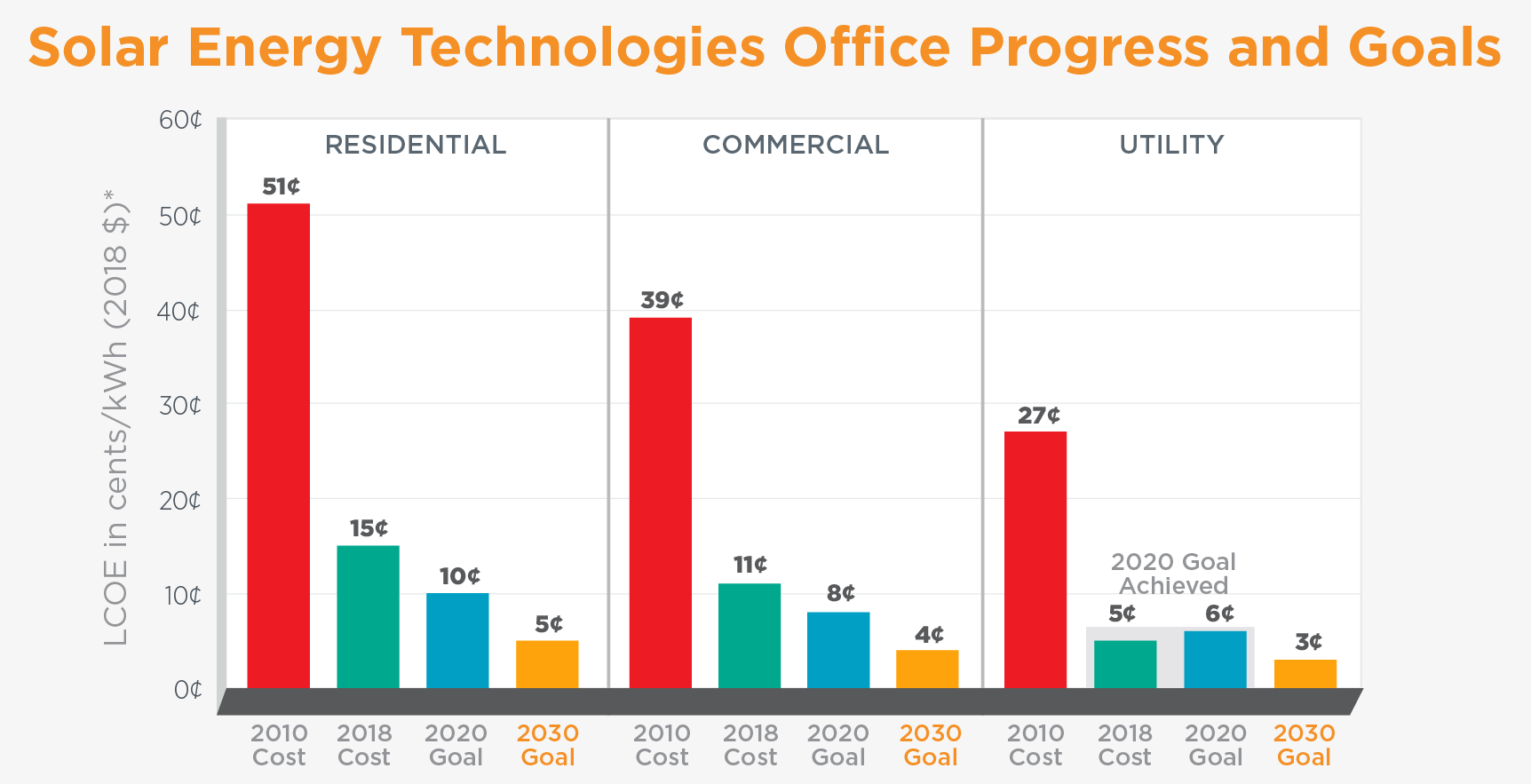
2020:
- Globally, renewable sources demonstrated the fastest growth over the past two decades reaching over 11% contribution to the global energy mix.
Year Fossil fuels Wood biomass nuclear renewables 2000 77.3% 10.2% 5.9% 6.6% 2020 78.0% 6.7% 4.0% 11.2% Source: World Economic Forum [5], 2022
The Big Picture
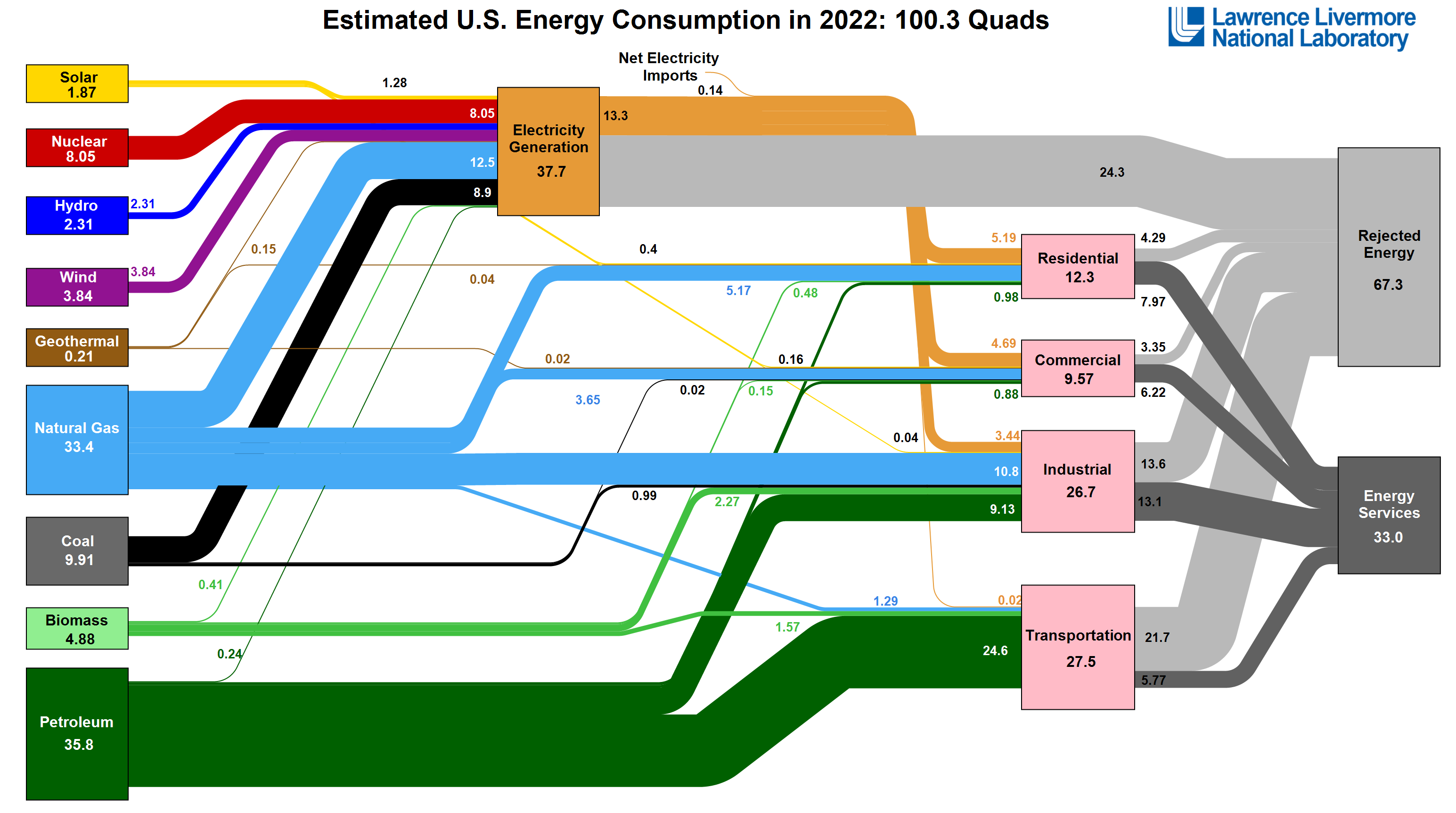
Click here [6] to see the larger version of this chart.
This annual energy flow chart shows the total energy generated by different sources and consumed by different sectors. The units used here are quadrillions of Btu’s (“quads” for short) indicate massive amounts of energy used at the national scale.
The total estimated energy consumption in the US in 2022 is around 100 Quads, and this number is on the upper end of the typical consumption bracket:

The contribution of solar energy has not yet approached the magnitude of traditional fossil fuel sources in the US, however its contribution to the renewable share of the electricity generation is actually substantial.
Let’s crunch some numbers:
National Electricity Mix
Total renewable energy share (including solar, wind, hydro, biomass, and geothermal) in the electricity sector sums up to 7.9 Quads (21%), which is comparable to 8 Quads (22%) for nuclear energy, 8.9 Quads (24%) for coal, and 12.5 Quads (33%) for natural gas. That is about 1/5 of the entire national electricity mix. If we look back at similar data for the year of 2012, renewables only accounted for 12% at that time.
What sources are fastest growing?
Comparing the data from the historical energy data from a decade ago (2012) and the most recent (2022), the fastest growing generation capacities are solar, wind, and natural gas. Nuclear remained steady, hydropower and geothermal showed small decline, biomass – small increase, and coal was on significant decline over these ten years.
Summarizing the trends:
| Sector | Growth from 2012 to 2020 |
|---|---|
| Solar | + 698% |
| Wind | +182% |
| Natural Gas | +28% |
| Biomass | +13% |
| Nuclear | 0% |
| Geothermal | - 7.5% |
| Hydropower | - 14% |
| Coal | - 43% |
Look up the historical versions of energy flow charts here [7].
By a big margin, solar has been the fastest growing source (almost 7-times growth!) in the national energy industry. The impacts were primarily seen in the residential and commercial sectors, which in addition to the grid may benefit from the distributed generation options (small-scale and off-grid installations).
Projections
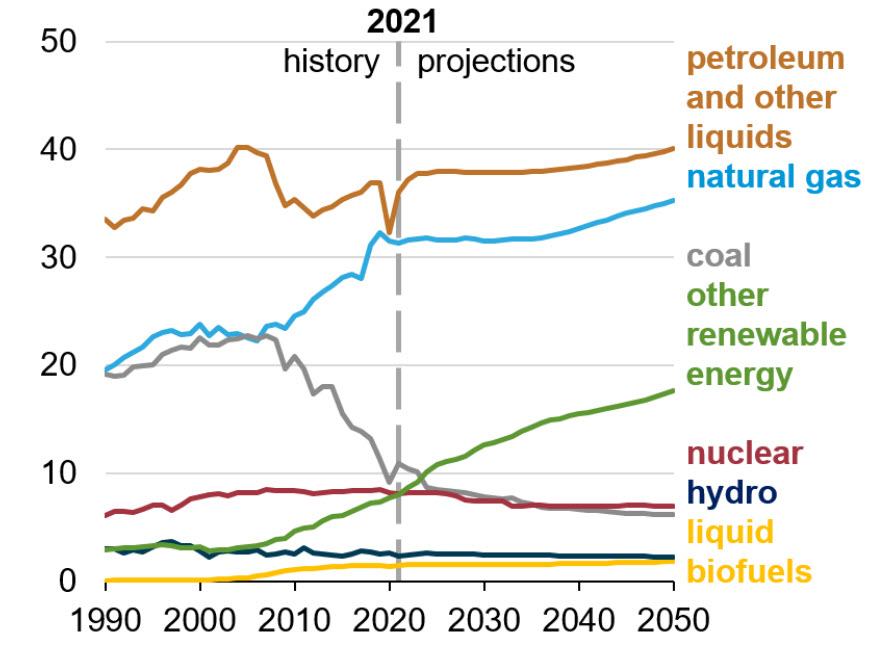
Projections shown in this plot are based on the analysis of energy markets by EIA: “we project that renewable energy will be the fastest-growing U.S. energy source through 2050. Policies at the state and federal levels continue to provide incentives for significant investment in renewable resources for electricity generation and transportation fuels. New technologies continue to lower the cost to install wind and solar generation, further increasing their competitiveness in the electricity market, even as the policy effects we assume level out over time.”
“We project that consumption of natural gas will keep growing as well, maintaining the second-largest market share overall. The expected growth in natural gas consumption is driven by expectations that natural gas prices will remain low compared with historical levels.” (EIA, AEO2022 [8])
Major Players
In the past century, society has been dependent on combustible products such as coal, natural gas, and petroleum products as the fuels of choice. While these energy sources are relatively cheap, they are not always available or located where we most need them, and they are non-renewable. In addition to this, there are real concerns about the effects burning these products could have on human health and safety as well as large impacts on the environment in general. The following are geofuels (resources from the Earth that are non-renewable).
- Coal (fossil fuel)
- Petroleum derivatives (fossil fuel)
- Natural Gas (fossil fuel)
- Nuclear (fissile fuel)
Nuclear energy is an additional geofuel that does not have a major CO2 impact and is a major resource in countries like France. However, it has a strong "yuck factor" for the majority of society in Germany and the USA. It has the additional challenge of undesirable proliferation of fissile material for arms use. Again, there are numerous countries including the USA that make use of nuclear power for low-CO2 energy, but infrequent, high-visibility events such as Three-Mile Island, Chernobyl, and Fukashima Daiichi continue to influence popular will to invest and develop the resource.
Renewable energy sources provide a suitable alternative to using fossil fuel combustion (which generates CO2) to meet our energy needs. The well-planned use of renewable energy sources such as solar energy must form a part of the portfolio of energy sources. There are numerous real challenges for renewables like solar, such as intermittency and diurnal cycles (night-day), as well as the ability to identify economic opportunities, which is why we are putting a lot of effort into understanding the solar resource and the related economics in this course.
Energy production and CO2 production—link to population
The following link uses Gapminder World to show the increases in cumulative CO2 production through time associated with population growth. Click on the link and press "Play" in the bottom left of the diagram:
You can explore this tool later and create your own plots with respect to time. For example, if you were to plot energy production (Supply) or use (Demand) you would see the same trend, or if you were to plot cumulative CO2 (log) vs. total energy production (log), they would show a rough linear correlation. But, for now, I want you to see where there are links between population, energy production, and CO2 production. Why is the USA more or less stable in its CO2 production?
1.3 Discussion Activity
Yellowdig!
This semester we are adopting a new platform for class discussions – Yellowdig! If you have only participated in the Canvas discussions so far, this may feel a little different. My hope is that this tool will help us make the discussions more engaging while maintaining the breadth and depth of learning we hope for. Please refer to the course orientation page that explains the steps to establish your Yellowdig account and set yourself up for participation.
Already have the Yellowdig account? – Then go to Canvas course menu, and click on “Yellowdig” link on the left to enter the conversation space.
Lesson 1 Discussion: History of Energy Resources
For this first week of the class, I would like you to engage in conversations about the historical development of energy resources in your area – solar and beyond! Here are some guiding questions that will set you up and help you create good posts and initiate productive discussions:
- How far back in time can you find historic energy information for your locale?
- What are the traditional sources of energy and fuels (geofuels) your region relied on in the past?
- What is the history of solar energy use in your area (not limited to solar panels – think broader!) for heating, cooking, power etc.
- From your own perspective, how good is the solar resource where you live and what it may mean for the economy of your locale?
Some of these questions will require you to dig in a bit and research outside of this class content. Expect that it will take some time to find good, resourced information.
Tagging
Yellowdig Tip: When you create a post in the Yellowdig discussion space, you are required to choose a topic tag. For Lesson 1 discussions, use either (or both) of these tags:

You can create a single post or split it into two different topics – whatever feels best for you!
Importance of interaction
When it comes to Yellowdig, your posts, comments, replies, questions and answers – all these may add points to your yellowdig score, so don’t hold back! In order for these activities to work best for your learning, you need to participate frequently, keep up with conversations going and take opportunities to interact with your peers. Sometimes spontaneous conversations sparkled over a single fact mentioned bring more value than initial content.
Grading
Yellowdig discussions will account for 15% of the total grade in the course. Your posting and interactions will contribute to your weekly participation score (1000 pts.). After each week, all the Yellowdig points you earned will be transferred to Canvas and added to the your cumulative participation grade. Check the Orientation Yellowdig page for more details on the points earning rules – how many you get for starting a conversation, posting a comment, or attracting traffic on your post.
Notifications
Be sure to set notification preferences in Yellowdig if you’d like to receive emails about someone posting or replying to your post. That will allow you not to miss important action as you go through the week.
Deadline
I encourage you to create your posts in the middle of the study week (Sunday) and not to wait until the end of the lesson. That will allow others to respond in a timely manner. Each conversation will stay open after the lesson is done, but it will be harder to earn a high score with your work once everyone moved on to the next lesson. Note that point earning window for each lesson is limited to one week.
1.4 Solar: the Response to Energy Constraints
Reading Assignment
- J.R. Brownson, SECS, Chapter 2 - "Context and Philosophy of Design".
- K. Butti and J. Perlin, "A Golden Thread: 2500 Years of Solar Architecture and Technology", Chapters 1, 2, and 5
(Electronic course reserves, or "e-Reserves," are articles and book chapters that are available online through the University Libraries. Access this lesson's reading by going to Library Resources in Canvas and selecting E-Reserves for EME 810)
These two readings will provide our introductory perspective on solar energy in society. I want you to think about the impact of perception in society. Some of the "constraints" in society are real, physical limits to fuel access, while others are much more subtle--but both have a similar response to induce people to adopt alternative energy strategies.Energy Constraint Response
We can observe that popular perception of solar energy is strongly influenced by access to inexpensive fuels. In periods when fuels were effectively accessible, inexpensive, and unconstrained, a light-induced energy transfer (for sensible or latent heat change or for electricity generation) is usually perceived as diffuse and insufficient for performing work. However, for periods in history where fuels have become constrained (e.g., inaccessible due to high cost or high risk), innovation has turned to solar technology solutions. In such cases, the use of light-induced energy transfer is perceived as ubiquitous, and ample for performing work.
Evidence of such fuel constraints is observed as far back as the fifth century BC. During this period, the Greeks faced severe shortages of wood fuel. Archeological remains demonstrate that home designs evolved such that all houses could draw maximal utility from the Sun's warmth in winter months. It is interesting that famous Greek individuals commented on this solar design of homes. Aristotle has commented that home builders would shelter the north side of a home to keep out the cold winter winds. Socrates also lived in a home heated by the sun, and observed, "In houses that look toward the south, the sun penetrates the portico in winter" keeping the space warm (Note: a portico is just an older term for a porch). The Greek playwright Aeschylus further noted that only primitive cultures "lacked knowledge of houses turned to face the winter sun, dwelling beneath the ground like swarming ants in sunless caves." How primitive have we been these years without solar designed homes?
The Sun as a large stock for Renewable Energy Resources
A renewable resource has a rate of withdrawal (a flow) from the stock that does not exceed the rate of resource replenishment.
Sun: pretty big stock for wind and solar.
The sun provides energy in the form of radiation. Solar radiation is the most important natural energy resource available to us because it drives all environmental processes acting at the earth's surface. It drives the earth's rain cycle, which powers modern hydroelectric generators, and large-scale atmospheric circulations which provide the winds that have powered windmills for centuries. The sun doesn't warm the air, because the sky is largely transparent. The sun warms the ground which then warms the air. We will show how solar energy conversion devices often take advantage of the solar-thermal connection. In fact, we can often take advantage of air masses contained by walls, trees, or hills to trap and store thermal energy from the sun.
Solar energy technologies convert solar irradiance (sunlight) into forms of energy found useful to society. Historical and current developments in solar technology often coincide with specific economic or fuel constraints. As we observe from our reading assignment, technologies using solar energy conversion have been developing for a long time. Solar and wind power are among the options providing a low or non-CO2 associated energy source for electricity production. Solar energy is also a natural part of heat production in buildings or solar thermal plants. This section will review the value of solar energy from a historical context while also discussing the origins of using solar energy and the present-day development of the solar energy industry.
Controlling Home Heating: Passive Solar
Below is a link to a video of the Ryoan-ji Zen temple in Japan. Look to the left of the marker at the white field just to the south of the brown roof (you will need to zoom in a few times first). This is the famous rock garden of the temple. The white field reflects light into the adjoining room to the north, and the walls surrounding the field keeps cool air inside the area. As a side note, the icon you see on the building is a map symbol for a Buddhist temple.
All right. So, what you're looking at here is a map view in Japan of a Buddhist temple called Ryoanji. It's just outside of Kyoto. And what we want to really focus on here is that this is an example of using the solar resource in a way that is old actually, but very traditional and has a really high value to a group of people. So, this is actually a temple.
And if I go in here, I should be able to show you that the—nope, I cannot.
There we go. I should be able to show you that in this map, we've got here a direction that is South. So, we're in the Northern Hemisphere. This the South. That means that this whole white space is a great area for reflecting the sun's light. And it will actually reflect the sun's light into the space just to the North. That space is actually going to be an area for working, writing, copying down what we would call sutras.
And it's very interesting because you have a white surface that is directing visible light into that space. And in doing so, you're actually avoiding using fuel to provide the lighting. That actually improves air quality. And you are avoiding the cost of that fuel in the process of doing this.
Now, if we look at the image of Ryoanji here, here's that rock garden. So, close up, you're starting to see something that you recognize, at least from popular culture, which are these calming Zen rock gardens.
The interesting thing here is that the rock garden itself is very functional. Again, it is going to be bouncing light into the space where people are working so they get much better light. In addition, think about it. White objects do not absorb light. So, by the very nature, they're reflecting light. So, you have an area that is not going to be warmed up during the day. And in fact, this is a very bright area. And it's going to remain somewhat cool. You're going to create a microclimate of cool air.
And then you have walls. And the walls are there to contain that cool, stored air. If the walls were not there, the air would just sink and flow away from the cool area. So, you're containing and storing this cool thermal energy. That, in addition, is connected to the space that we're seeing right in here. It's connected to this space. There are open doors through here, so you got cool air coming in. And you're seeing that this is one way to use solar energy for some very high-functional use.
And if we go again back to the Zen rock garden-- this is the same garden. You notice that there are rake imprints. And there's this classic idea of Zen monks raking this in a meditative process. We even sell small sandboxes with little miniature rocks and rakes to simulate a rock garden. But the actual value of this rock garden is very functional.
And so, when you rake those rocks, what you're actually doing is removing leaves. You're removing any growing moss or lichens on those rocks. You're maintaining the brilliance of those rocks as a good reflector. And so the process of raking is actually again, functional to maintaining your solar reflection device, which you're seeing here at Ryoanji.
If solar energy is this important, and the Greeks in the fifth century B.C already recognized this, you may ask why solar energy applications are not more prevalent than they are at the moment? While there is no simple answer to this, there are still many obstacles that lie in the way of its widespread adoption. The future of solar power development will depend on how we deal with constraints such as scientific and technological problems, marketing and financial limitations, and political actions and agreements that favor other energy sources.
For more information on solar home design (also termed "passive solar"), see the California Solar Center: Passive Solar [12].
Hot Air and Water
Horace de Saussure was a Swiss naturalist of note to the history of solar development in the 18th century. He began to explore the role of a glass cover on a confined space like a box or a room. In the 1760s, de Saussure observed the following: "It is a known fact and a fact that has probably been known for a long time, that a room, a carriage, or any other place is hotter when the rays of the sun pass through glass." To find out how effectively a glass cover works to trap solar gains, de Saussure constructed a large flat pine box that was insulated inside, with a glass cover on top. Inside the box, he placed smaller boxes. When the flat cavity-cover absorber was exposed to the sun (no concentration), the internal box heated to 109 °C (228 °F), which is 9 degrees higher than the boiling point of water.
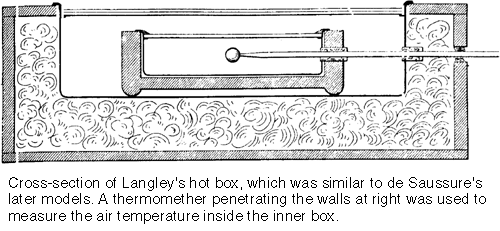
Cross-section of Langley's hot box (solar thermal box with two glass covers and a thermometer on the inside), which was similar to de Saussure's later models. A thermometer penetrating the walls at the right was used to measure the air temperature inside the inner box.
Functionally, the clear glass allows shortwave irradiance to transmit through and be absorbed by the dark interior of the box. In addition, the glass cover prevents the warm air from escaping. This is a classic flat plate cover-absorber system. The hot box that de Saussure began with later became a prototype for flat plate solar hot water panels, providing hot water to millions since 1892. The hot box also led to the development of modern solar cookers. For more information on solar thermal design, visit the following links:
- Solar Thermal Energy for Homes [14]
- Horace de Saussure and his Hot Boxes of the 1700s [13]
- How Solar Cooking Works [15]
Photovoltaics
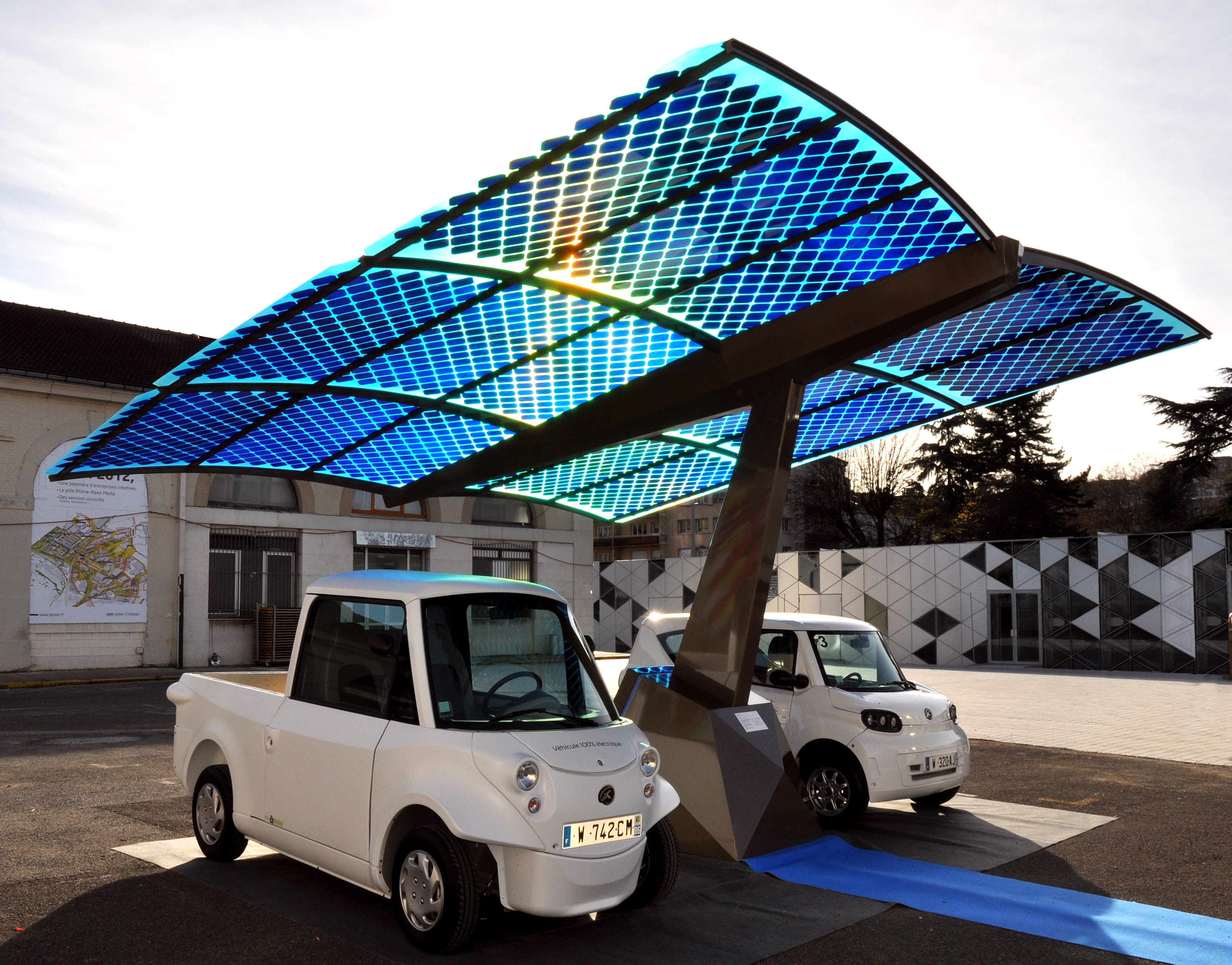
While photovoltaic materials were explored in the 1860s, tied to research in transatlantic telegraph cables (using selenium; by electrician Willoughby Smith), they did not emerge into the larger market until nearly 100 years later. Photovoltaics using silicon material were introduced to the commercial world during the early 1950s by three lead scientists at Bell Laboratories: Calvin Fuller (a chemist), Gerald Pearson (a physicist and materials experimentalist), and Darryl Chapin (a device engineer). The development of a silicon-based PV cell led to applications in space and telecommunications first, followed by applications for the petroleum industry (for anti-corrosion in wells).
PV has proved itself as a standard technology for decades. All of today's satellite communications are powered by photovoltaics, starting with the Vanguard 1 [19] (which had no "off" switch, and so continued to transmit long after it needed to). So, be thankful, we would not even have a modern society without the advent of PV!
For more information on photovoltaics: check out the following sources:
- Supplemental Book and reference: From Space to Earth: the story of solar electricity. by John Perlin. ISBN 0-937948-14-4, available from the Penn State Libraries.
- The first PV device was made by 19-year-old André Becquerel in his father's laboratory, in 1939, Wikipedia article on A.E. Becquerel [20]
- PVEducation.org [21]
- California Solar Center: Photovoltaics [22]
Review
Constraints have included wood shortages in Greece and Rome in early centuries BCE, shortages of trees and fuel in the Chaco civilizations of the Anasazi peoples of North America, coal reserve constraints in 19th century France, and fuel access constraints in rural California before the 1920s. We have recently (the past decades) entered into a new period of constrained fuel consumption due to climate forcing effects from anthropogenic greenhouse gases (associated with fuel combustion, agriculture, and high energy demand), as well as increased risk in supply chains for fuels (the quest for energy independence).
1.5 What is a Solar Energy Conversion System?
Reading Assignment
- J.R. Brownson, Solar Energy Conversion Systems (SECS), Chapter 12 - "Systems Logic of Devices: Patterns"
We are jumping far, far ahead to see where we can take the concept of a Solar Energy Conversion System in society. The text in Chapter 12 complements your reading of Ch 2 and goes in depth to identify the different technological patterns in solar energy conversion systems. I think you will find the content relevant in the broad sense of designing systems, and that it will engage your creative processes for the future project at the end of the course.
Think about the way in which so many of our technologies and biologies are in fact "solar energy conversion systems," with some or all components of a functional aperture, receiver, distribution mechanism, storage, and control mechanism. What may be even more interesting is when you start to identify collections of different SECSs in the same space.
An important context of the approach to solar energy is understanding what a system is. We define a system as a collection of elements that are connected together via weak or strong network relations and that have a pattern or structure that yields an emergent set of behaviors. We are concerned, in this course, with environmental systems, each with boundaries that describe the system and its surroundings.
A Solar Energy Conversion System (SECS), as the name implies, is a system that converts the energy from the solar resource into work found useful by society. This system has the potential to be deployed as an ecosystems technology or an environmental technology, meaning the energy system interacts in a constructive way with the patterns of nature. As a process, solar energy conversion calls upon designers and engineers to include all the elements essential for the proper functioning of a conversion system. These include the Sun, the Earth and the applied technological system (for example solar thermal or solar photovoltaic) in question. These systems call upon researchers to simultaneously assess scales of solar resource supply and use, systems design, distribution needs, predictive economic models for the fluctuating solar resource, and storage plans to address transient cycles.
Collector Basics
We have reviewed the basic system concept that can be used to design solar energy conversion applications, and more detailed and thorough information will be presented in a future lesson. At this point, we move on to the nature and composition of SECS on the Earth side (incident surfaces).
A Solar Energy Conversion System consists of the following elements:
- Aperture (the opening to allow light in, and at the same time constrain the solar flux into the system);
- Receiver (the opaque absorber that converts the sun to other forms of energy, the active element that is responsible for energy conversion);
- Storage (sometimes there will be a designed or naturally present storage mechanism, as sunlight is intermittent);
- Distribution Mechanism (internal to the system, responsible for energy delivery);
- Control Mechanisms (which helps adapt the conversion process to the intermittent/seasonal changes and user needs).
The next section of this lesson provides you with an exercise to identify these elements in several different solar energy conversion systems functioning in diverse settings.
1.6 Lesson 1 Learning Activity
Activity: Identifying the Components of Solar Energy Conversion Systems
Based on the reading in the previous page of the lesson, we understand that almost everything exposed on the Earth's surface can be described in terms of a solar energy conversion system. Some systems are capable of producing more useful work than others, and there are both technologically designed and natural systems. We will use this activity to explore this concept and to identify various SECSs embedded in society. Some will be obvious in the context of this class, while others will require a more nuanced view or a creative perspective.
Take a look at each of the following five images, and thoughtfully locate as many SECSs as you can in each one. Now, try to identify and list the functional components (aperture, receiver, storage, distribution, mechanism, and control mechanism) for each of these SECSs and think about how they work. Please write a short paragraph for each image that identifies all of the SECS’s as well as an explanation of how each one serves as a component. It may even be possible that some of the systems are themselves components of a larger system, in which case you will need to dial out your perspective to a larger system.
Do your best to explore and be creative rather than looking for all the "right" answers.
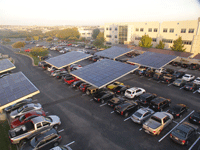 [23]
[23] 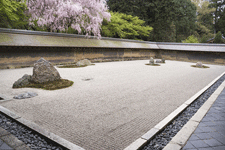 [24]
[24] 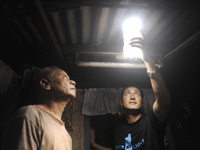 [25]
[25] 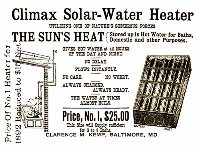 [26]
[26] 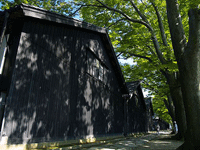 [27]
[27]
Submission
Please fill in the "matrix" (Excel spreadsheet template provided) based on the results of your analysis. You are also welcome to provide any additional discussion on the systems you observe in the images. Submit your work into “Lesson 1 Learning Activity Dropbox” in Canvas.
Grading Criteria
This activity is graded out of 20 points. Each image is worth 4 points, 2 points for identification of the components and 2 points for your explanation.
Deadline
See the Canvas calendar for specific due dates.
1.7 Frameworks for Including SECS
Reading Assignment
- J.R. Brownson, SECS, Chapter 2 - "Context and Philosophy of Design".
Come back to review this Chapter specifically focusing on the Frameworks sections.
The last activity emphasized the way that SECS can "work" as a functional system. Now, I would like you to read and reflect on the broader concept of "design" as pattern with a purpose in society and the environment. As you are reading, look into the ways that society has established frameworks for integrating solar goods and services into local solutions (which we will expand upon as "locale"). The following points are highlighted in the text.
- Solar as Lighting Aid
- Solar Rights and Access
- Solar Power Entrepreneurs
- Solar Ecosystems Services
In this section, we are going to be looking at some of the same pictures we saw in the Learning Activity, but from a different perspective. We will call the following case studies "frameworks," and investigate the value of solar energy conversion systems in different contexts. Consider the following frameworks as interpretations of valuing the solar resource and the resulting solar goods and services by society (in economic and sustainability terms): the same resource can be applied to different client needs, the way that we have set up legal ramifications to protect access and rights to the resource, the entrepreneurial/ecopreneurial spirit that is a part of SECS design and implementation, and the ecosystems services that surround our SECSs.
Solar as Lighting Aid
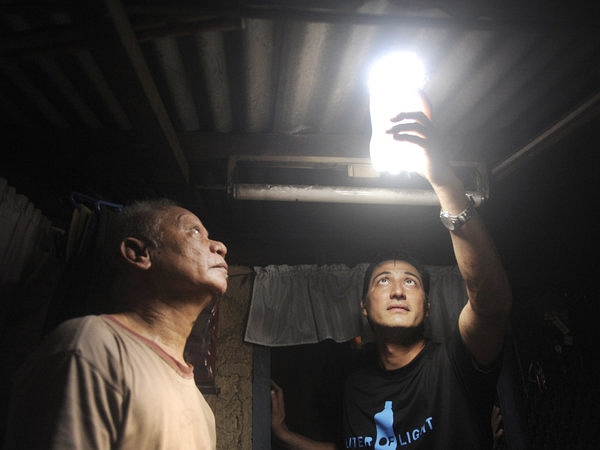
NPR Audio Article [28] (Transcript available on the website)
Many of us will come into the field of solar energy with a slightly biased view that the solar resource is useful for making electricity (a preferred solar good by many stakeholders) using photovoltaic technologies (the Solar Energy Conversion System of note in current society) or for making hot air or water (like a solar hot water panel, another SECS technology). However, we must be also aware of the use for daylighting. Daylight is as essential to human health as clean water and air. The variable intensity of daylight has been found to increase alertness within the office space (as opposed to constant light conditions with artificial lighting).
In the case of a Liter of Light (see link to NPR article, above), the ecopreneurial venture by this non-profit means using appropriate technology to deliver a high solar utility (again, meaning a preference to the set of goods and services from solar energy conversion systems) to their clients at accessible costs. The bottles are discarded 1 L plastic soda bottles, filled with water and a drop of bleach (to minimize algal growth or other microbes). The technology is the same as a "light pipe," or a fiber optic, using different indices of refraction between air, water, and plastic to create a phenomenon called total internal reflection. On boats, this type of light direction uses a centuries-old SECS technology called a deck prism [30].
Not only do these warm climate homes benefit from better lighting, they also avoid fuel costs for electricity (if available) and combustible fuels such as kerosene. Additionally, the solar bottle light pipes will improve indoor air quality by reducing fuel combustion inside.
Solar Rights and Access
While the solar resource from the sun is available at no cost to us, there are laws that may restrict the way we intend to use the sun for purposeful work. Designers will often call the accessible area for solar implementation the "solar envelope," but how do we maintain the legal rights to make use of or access our own solar envelope, and can we make sure that solar technologies can even be installed in our locale? Legal structures for solar energy is not a new concept. In ancient Rome and Greece, legal structures were set up in the form of easements, allocated government lands, and sometimes strict urban planning for orientation and elevation limitations on entire communities.
Solar rights define access to solar energy and hold significant economic consequences. They dictate whether a property owner can grow crops, illuminate his space without electricity, dry wet clothes, reap the health benefits of natural light, and perhaps most significantly in our modern era, operate solar collectors.
In the USA, we distinguish between solar rights and solar access.
- Solar rights give you the option to install a specific solar energy system within residential or commercial properties otherwise subject to private restrictions.
- On the other hand, solar access ensures that a structure receives sunlight across property lines without obstruction by neighboring objects, including trees.
- Examples of common private restrictions are bylaws that forbid PV on roofs, or clothing drying lines anywhere.
- Over 40 states have adopted solar access laws either in the form of a Solar Easement Provision or/and a Solar Rights Provision.
Solar Power Entrepreneurs
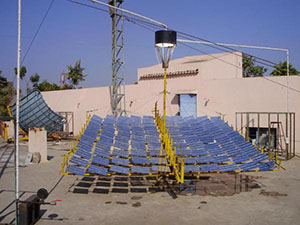
Entrepreneurs are generally great contributors to the commercialization of interesting and useful technology. The field of solar energy is no different. An important character in the development of SECSs is Frank Shuman, an eclectic inventor in the late 1800s. Shuman formed the Sun Power Company in 1910 and successfully harnessed solar power physics to generate steam pump power in Egypt in 1911.
New entrepreneurial ventures in solar are often also humanitarian and ecological in nature. SolarFire.org and Liter of Light are two examples.
The Prometheus 100 solar concentration systems for steam generation can be seen in the image above. Mirrors (the aperture) are focusing shortwave light onto an upper central receiver (glowing bucket), where steam is produced. The steam is running a small steam generator pictured in the lower left of the image. The supply water is pumped in from the tube seen in the upper right. The entire system plans are available as open-source information, and can be machined with accessible local technologies and inexpensive materials. This system was installed in Rajkot, India.
Solar Ecosystems Services
Any solar technology will have an impact on the ecosystem in which it is deployed. In addition, it could add ecosystems services to the area if designed with an awareness for landscape architecture and ecology. Presently, design teams discuss manners in which photovoltaic arrays can add desirable shading in addition to power generation (desirable shading would be considered a preferred solar service). One common method is to design and install a solar panel to also serve as a shading structure for cars in a parking lot.
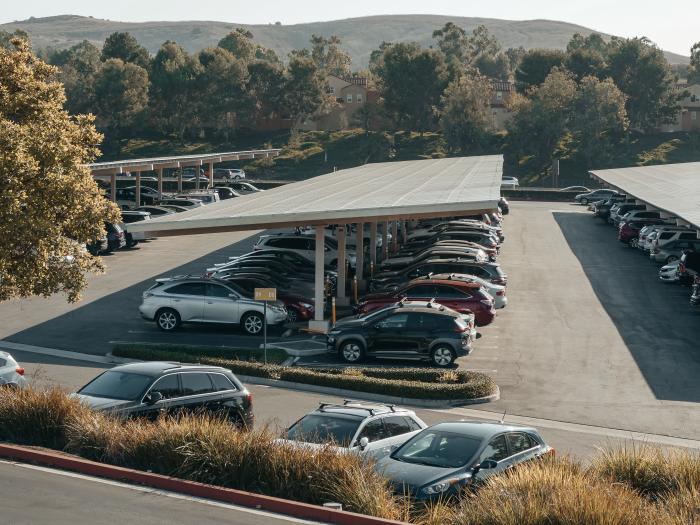
- Supporting services or habitat
- Provisioning services
- Regulating services
- Cultural services
You may wish to read the short descriptions of the various services from The Economics of Ecosystems and Biodiversity (TEEB [35]) website. They have created a fairly concise list with descriptive sections that clearly identify valued processes that emerge from a resilient ecosystem. Remember: our technologies and our societies are always a functioning part of our ecosystems in the locale that we operate, even if it doesn't quite seem that way in our daily lives.
Supplemental reading
1.8 Introduction to SAM
Download System Adviser Model (SAM) Simulation Software
NREL's System Advisor Model (SAM) [37]will be a useful simulation tool for this class. You will be required to use it for some of lesson assignments and your project. So I would like you to take the time to download and try launching SAM on your computer this week.
The NREL website linked above also has a webinar video, which walks you through the key functions of SAM. Please feel free to watch it at your leisure.
Directions
- Create a User Account [38] and choose Photovoltaic as the Technology Focus at the bottom of the page.
- Follow the download and installation instructions.
NOTE: SAM is an Open Source project! The version of System Advisor Model as of the update of this page is SAM 2023.12.17 (and there will likely be newer versions each semester). It requires about 1 GB of disk space, and either Windows 10/8/7 or OS X 10.9 Intel or later. SAM is a 32-bit program that will run on both 32-bit and 64-bit operating systems. If you do not have one of these operating systems, you can browse their list of Legacy Versions as an alternative.
- Install and launch SAM on your computer. The very first time, you will need to enter your email and click the "Register" button. SAM will send you a code to use in the next entry for "Key". Paste it in and get rolling!
- Try to "Start a New Project" with Photovoltaic Detailed Model for a Distributed scenario. The defaults are pretty reasonable in SAM. If you've never tried something like SAM, don't worry. This is really just an exploration step, and you can't really break anything by opening a new project and running it. So, just explore a little and have some fun.
- If you successfully create a new project, you can browse through the system parameters and options on the left side menu. Check the defalt numbers. You will see that you can change the values in the white boxes, and numbers in the blue boxes will calculate automatically.
- Hit the big blue box in the lower left labeled SIMULATE > . The program will run a year's solar data and will output a heap of results. The output in the table is the summary of stats for the project, usually estimating 25 years of a solar project.
Deadline
There is no deliverable for this activity, but I strongly encourage you to take initial steps for installation and creating a project in SAM this week. Lesson 2 will give you some work to complete in SAM, so it will be useful to have it up and running.
Yellowdig Conversation
Feel free to share your thoughts, questions, and tips on the SAM software in the Yellowdig space. Use the topic "Starting with SAM" for your posts. This is not a required activity, but it can still boost your participation score for this week.
1.9 Summary and Final Content
Summary
We have just finished looking at the historical and modern contexts for valuing solar energy (and SECSs) in society. I wanted to put you in the frame of mind that solar energy as a valued resource is a flexible concept. The value expands with energy constraints and with positive health and safety implications; the value shrinks with the reduced costs of alternatives such as fuels. There are many different ways that society values the solar resource, however, and as a part of a design or engineering team (or part of a policy team), we should remain creative and persistent in trying to develop and expand SECS deployment into society.
You have made your first step toward the solar assessment project that we will present to our peers in Lesson 12 at the end of the course. I would like you to make sure that you have found the SAM (System Advisor Model) [39] website and downloaded the software onto your systems. Your future clients/stakeholders will be informed by your creative ability to present them with a valuable solar resource in their locale, one which also yields financial benefit, social benefit, and/or greater ecosystems services. SAM is a useful complementary tool in that communication.
Reminder - Complete all of the Lesson 1 tasks!
You have reached the end of Lesson 1! Double-check the to-do list on the Lesson 1 Learning Outcomes page to make sure you have completed all of the activities listed there before you begin Lesson 2.